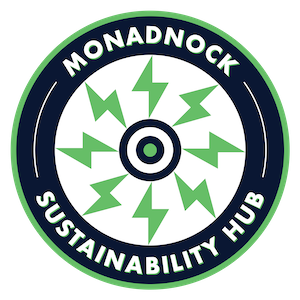By MSH Board Member, Doug Walker.
Originally Published in The Monadnock Shopper News, Green Monadnock column, Fall 2020.
There is an emerging wave of electric airplanes on the horizon. Prototypes are showing up around the world with advances in battery design. This generation of flight has the capacity to create a quieter and cleaner planet for us while providing a much more convenient and affordable mode of air travel.
Is this a previously unexplored field? You may be amazed at when the first electric motor pushed the first aircraft through the skies. So jump into your time machine briefly and make note of these notable milestones.
The day is August 9, 1884 in France. You would witness the first controlled free flight completed by the airship “LaFrance”. This was a hydrogen gas-filled dirigible with an 8 hp electric motor and chromium chloride battery. This craft completed several runs on a 5 mile 20 minute round trip course with its two designers on board.
It would be another 90 years until the next electric aircraft lifted off the ground! So set your time machine to October 23, 1973 in Austria. The “Militky MB-E1” is launched as a one-man motor glider. It used a 13 hp electric motor with a nickel-cadmium battery that flew for 11 minutes at nearly 1200 ft of elevation.
Now things are starting to pick up a bit. Reset the date to November 4, 1974 in California. The world’s first solar-powered unmanned motor glider “Sunrise” is launched. The craft made many flights and flew up to 3 hours on solar power alone with no batteries. Solar cells covered the entire 32’ wingspan which generated 450 watts for its small electric motor.
On May 18, 1980, also in California, the first manned solar-powered plane “Gossamer Penguin” takes flight.
Following those, solar assisted flights continued globally but what really catches our attention occurs between March 2015 and July 2016. “Solar Impulse II” becomes the first solar-powered plane to circumnavigate the world. This 2-seater motor glider, with four 17 hp electric motors and lithium-ion batteries had 17,248 solar cells producing 66KW of power on its wings. Its average speed was only 28-34 mph, but it was a significant step forward for electric aircraft.
The electric plane has two chief challenges to overcome in order for it to see mainstream use: 1) certification and 2) battery technology. Certification means that every component of the airplane needs to be proven safe and reliable by the Federal Aviation Administration (FAA) in this country. This is a rigid inspection process that can add years to a plane’s development for approval in commercial use. Some manufacturers are retrofitting fully certified gas-driven airplanes. They are replacing the motor and fuel tanks with an electric motor and batteries. This then becomes the only system on focus for inspection. The most critical area for certification is the batteries. They must not be able to catch fire as there is no acceptable tolerance for that situation while in flight.
The other problem is the weight of the batteries. Although electric motors weigh less than their gas counterparts, the battery weight is problematic. As it stands now, when a gas plane is retro-fitted with an electric propulsion system and balanced to the same weight, the flight duration of that plane flight is reduced considerably. Basically, a pound of batteries provides far less energy than a pound of liquid fuel.
That said, another milestone occurred in 2007 in Switzerland. The world’s first certified electric airplane was the“Velis Electro” by Pipistrel. This is a 2-seater that can stay in flight for approximately 50 minutes. Its intended commercial usage is as a flight trainer. It was actually a certified glider that was retro-fitted with an electric motor and batteries.
So what is driving this new field of tech development to overcome these challenges? The answer lies in the opportunity for a drastic reduction in flight operating costs while weaning off of the fossil fuel industry. Electric plane manufacturers are looking at servicing the demand for 500-mile flights or less. Ampaire, an American electric airplane firm, feels it could save over $800/hr in flight time compared to a conventional turbo-prop airplane. Larger planes are more fuel-efficient at higher elevations. Short flights less than 500 miles are not economically practical for larger airplanes. This is why so many regional airports have had to close. Electric airplanes are seen as an opportunity to offer cheaper, cleaner and quieter flights for the shorter runs. They also offer a chance to revitalize our local airports and provide convenient access to air flight.
Uber is developing an electrically powered Vertical Take Off and Landing Vehicle otherwise known as an air taxi.
Momentum for a cleaner future appears to be lifting off!
About the Author
Doug Walker serves on the board of the Monadnock Sustainability Hub. He has over 35 years of residential construction experience with a background in design, framing, finish work and solar PV & thermal installations. He is a Building Performance Institute (BPI) accredited energy auditor. His current creation ofWalker Basement Transformations offers substantial energy saving solutions for antique homes in the Monadnock region. Doug also chairs the Historic District Commission for Harrisville. He resides there in a passive solar home with his wife & twin teenage daughters.
Sources
Cover photo by Ross Parmly on Unsplash
